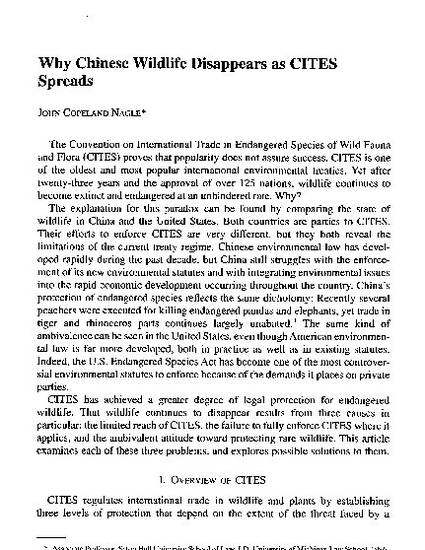
The Convention on International Trade in Endangered Species of Wild Fauna and Flora (CITES) proves that popularity does not assure success. CITES is one of the oldest and most popular international environmental treaties. Yet after twenty-three years and the approval of over 125 nations, wildlife continues to become extinct and endangered at an unhindered rate. Why?
The explanation for this paradox can be found by comparing the state of wildlife in China and the United States. Both countries are parties to CITES. Their efforts to enforce CITES are very different, but they both reveal the limitations of the current treaty regime. Chinese environmental law has developed rapidly during the past decade, but China still struggles with the enforcement of its new environmental statutes and with integrating environmental issues into the rapid economic development occurring throughout the country. China's protection of endangered species reflects the same dichotomy: Recently several poachers were executed for killing endangered pandas and elephants, yet trade in tiger and rhinoceros parts continues largely unabated. The same kind of ambivalence can be seen in the United States, even though American environmental law is far more developed, both in practice as well as in existing statutes. Indeed, the U.S. Endangered Species Act has become one of the most controversial environmental statutes to enforce because of the demands it places on private parties.
CITES has achieved a greater degree of legal protection for endangered wildlife. That wildlife continues to disappear results from three causes in particular: the limited reach of CITES, the failure to fully enforce CITES where it applies, and the ambivalent attitude toward protecting rare wildlife. This article examines each of these three problems, and explores possible solutions to them.
Available at: http://works.bepress.com/john_nagle/52/

Reprinted with permission of Georgetown International Environmental Law Review.